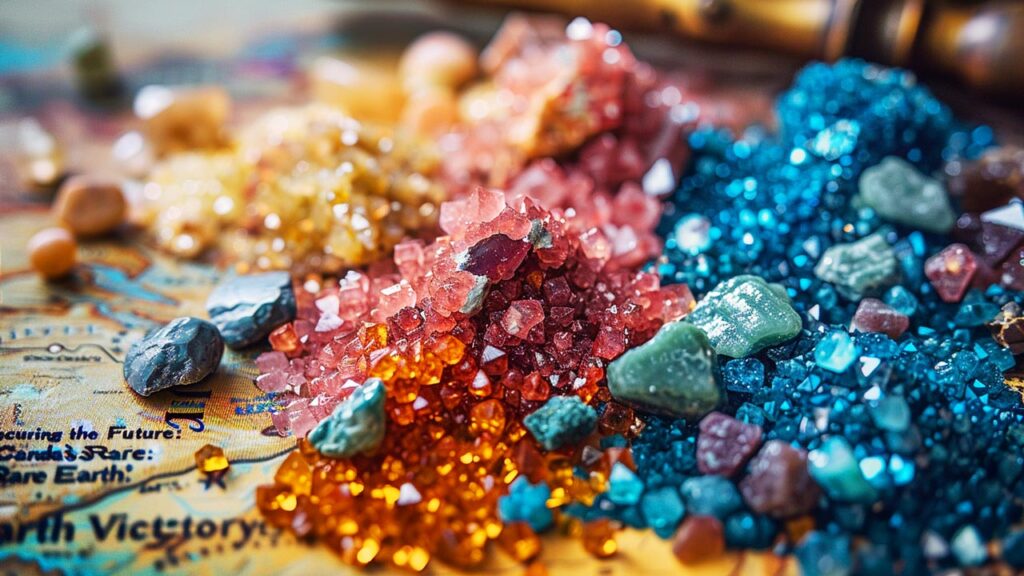“Deal’s Off”, Canadian Officials Tell China

China’s recent attempt to secure a rare earth minerals stockpile ended in failure when a competitor stepped in to snag the deal.
Vital Metals, a mining firm based in Australia, announced Monday that minerals collected from its Saskatchewan-based Nechalacho Project will remain within Canadian borders.
“We were presented with a case of elevated interest for Canada,” Vital’s managing director Geordie Mark told The Northern Miner, later adding: “This agreement highlights the strategic value and importance of the Nechalacho rare earths project and the prioritization of a rare earths value chain in Canada.”
According to Vital, the Nechalacho site in northern Canada could hold more than 200 million tons of rare earth elements (REEs), which are used in green energy production and weapons manufacturing. Right now, China dominates the industry despite its comparatively small natural stock, clinching 75% of the global market with only 35% of the global REE reserves.
“China was only able to establish such dominance over the REE industry in part because of lax environmental regulations,” said Harvard Independent Review’s Jaya Nayar. “Low cost, high pollution methods enabled China to outpace competitors and create a stronghold in the international REE market.”
That’s because rare earths can indeed produce green energy—but only after generating 2,000 times their weight in catastrophically toxic waste. Many Western nations refuse to accept this tradeoff inside their own borders, imposing heavy regulations on domestic REE producers that keep exporters like China competitive despite high asking prices.
What’s pushing Canada to allow REE mining and reap the profits, despite environmental risks?
The answer lies within the Canadian critical minerals list, which includes REEs and 33 other elements/elemental groups deemed strategically and economically significant. A recent expansion of the list added high-purity iron, phosphorus, and silicon, which—like REEs and 20 other elements on the list—are key components of the green energy transition. This update, plus the last-minute swoop to protect REE supplies, gives a glimpse into the role “green” policy will play and foreshadows increasing pressure on component supply chains. If other countries follow Canada’s example, prices of related metals on that critical list—including cobalt, platinum group metals, REEs, silicon, and copper—could see significant boosts. That’s a bet Canada is placing early by securing its access to REEs while cutting China out of the deal.
The recent Canadian purchase from Vital is also part of a larger economic and political salvo led by Prime Minister Justin Trudeau, who told reporters there will be no reconciliation between Canada and China following accusations of election meddling. On the mining stage, Canada is marketing itself as a direct competitor to China, flaunting its enormous mineral reserves as an alternative source for wary European countries afraid to rely on Chinese producers. China’s dominance won’t be shaken by missing a single deal with the Australian firm, though the move certainly sends a message calculated to exacerbate already strained relations between China and the West.
As if its challenge weren’t clear enough, Canada recently joined the U.S., Japan, and the Philippines to conduct military exercises in the South China Sea. Tensions between the four countries are on the rise, and economics is the prime battlefield. With REEs as a strategic focus and green energy policies on the Western docket, nations may put pressure on each other by sanctioning or otherwise straining metals supply chains—a move strategists on both sides will surely consider. With two of the world’s largest holders of rare earths reserves vying for stockpiles, the pressure on consumer countries to pick sides is growing, and this new symptom of conflict in the metals market will likely boost REE and related metal prices as countries stock up while supplies last.
It’s not just rare earths that will see gains. Silver, though not deemed “critical,” is a component of electric vehicles and other “green” technologies that governments (and private investors) will likely snap up in anticipation of tighter supply. Stress on metals supply chains is part of gold’s lifeblood, suggesting higher prices for this metal as well.
Good news for investors looking to shoot straight for the heart: REE prices bottomed out last year, indicating they’re due for revival and primed for a low buy.
“I’ve seen forward-looking studies that … don’t even factor in demand from defense sectors that push [the global annual turnover for REEs] well over a trillion dollars by the time we reach 2050,” said Melissa Sanderson, a consultant at American Rare Earths. “It’s a good, strong market now, and it’s one that appears to have healthy legs under it.”
More By This Author:
Recession Indicators Flashing
Federal Budget: May Deficit Soars To Almost 3x Above Average
Chinese Central Bank Halts Gold Acquisitions



